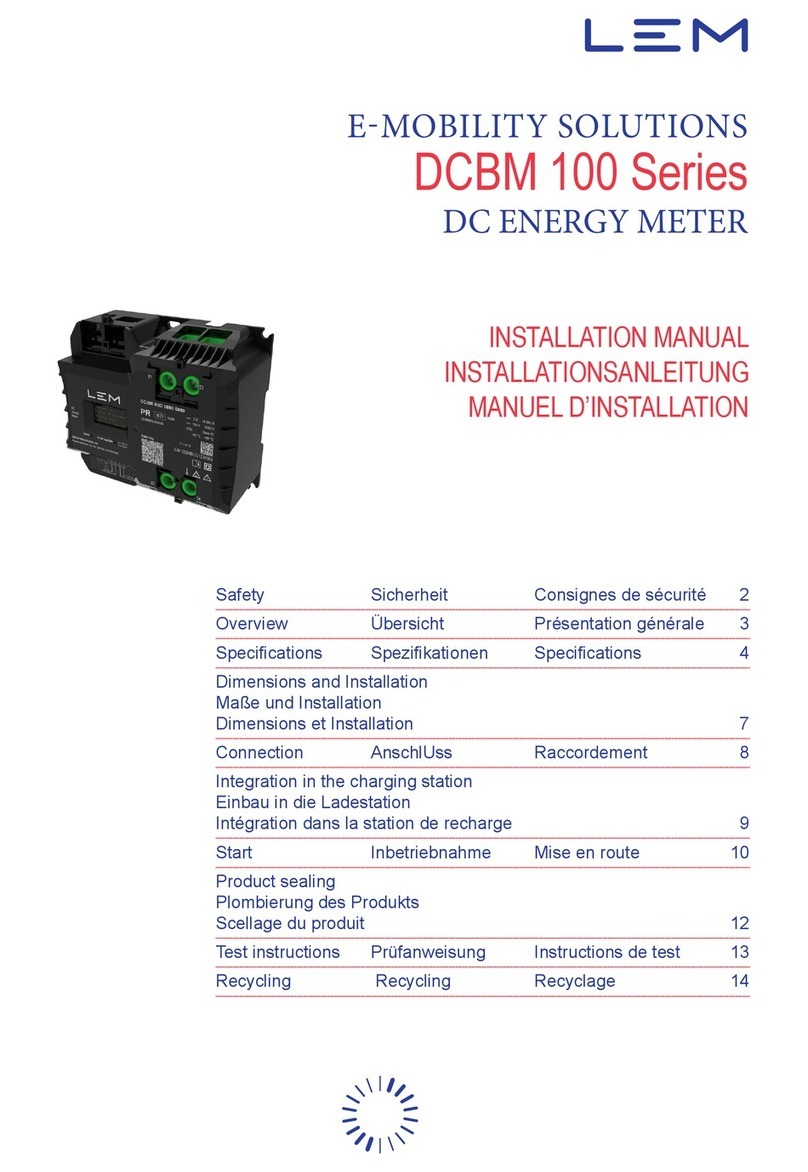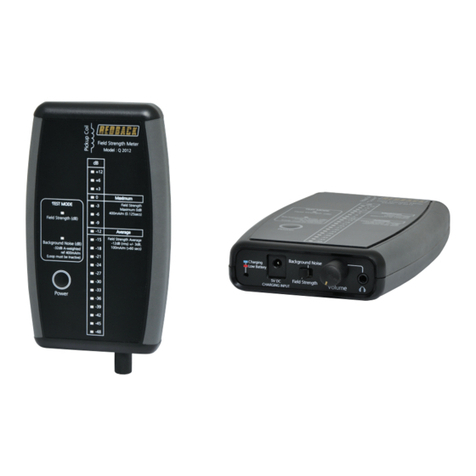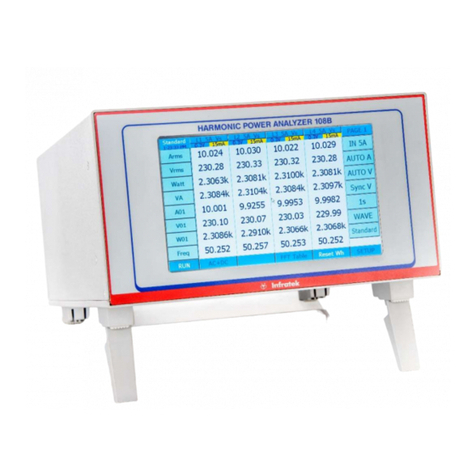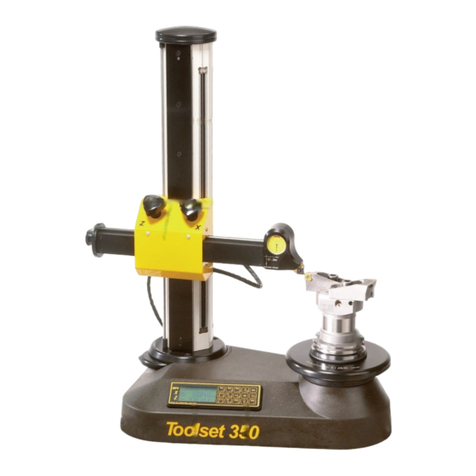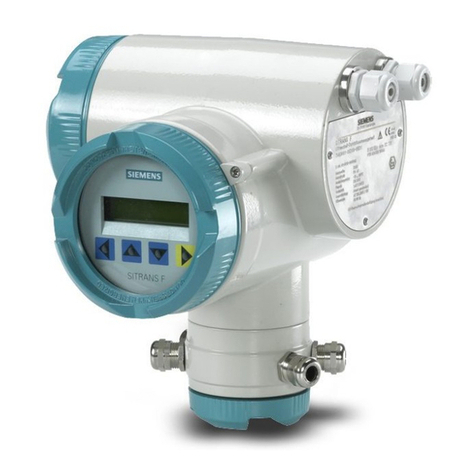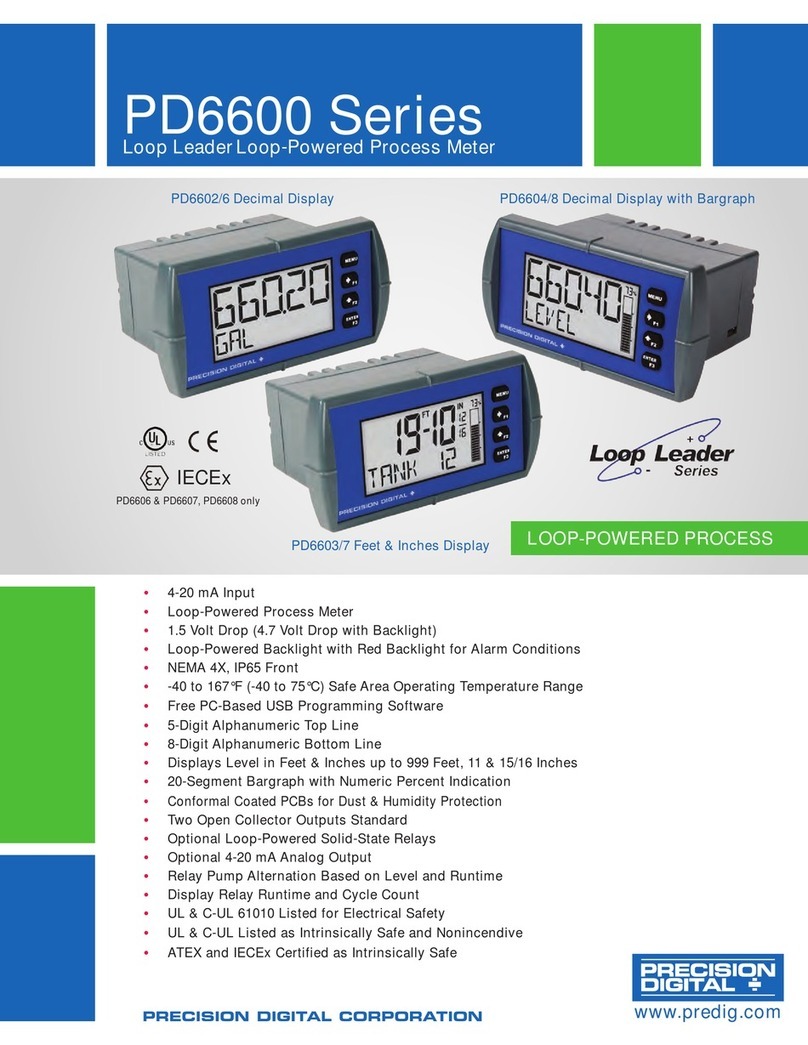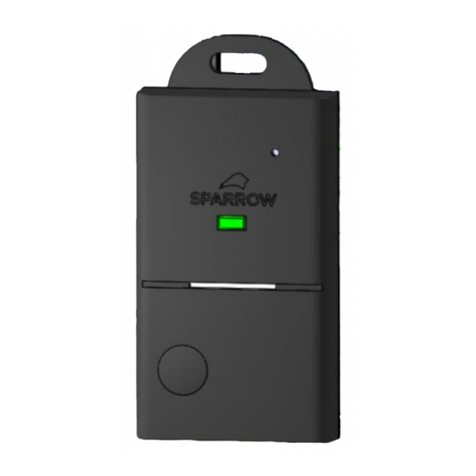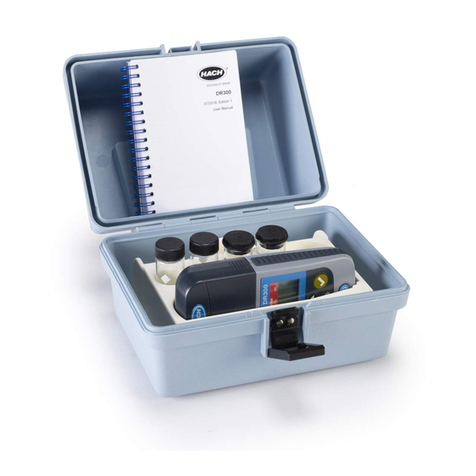Energomera CE102 User manual

CAHT.411152.165.1 РЭ
Operation manual
Manufacturer:
JSC «Electrotechnical factories «Energomera»
415, Lenin str. Stavropol, Russia, 355029
tel.: +7 (8652) 35-75-27, fax: 56-66-90,
free hotline 8-800-200-75-27
e-mail: concern@energomera.ru
www.energomera.ru
SINGLE-PHASE
MULTI-TARIFF
ACTIVE ENERGY METER
Russian National
Product Classifier 42 2861 5
Case type R5.1
Warranty service:
217, Gagarin str, Nevinnomyssk
Stavropol region, 357106
CE102
FRAME

2

2 3
TABLE OF CONTENTS
1 SAFETY REQUIREMENTS....................................................................................................................................... 4
2 APPLICATION AND OPERATING CONDITIONS ..................................................................................................... 4
2.1 Functionality ..................................................................................................................................................... 5
2.2 Operating conditions ......................................................................................................................................... 8
2.3 Environmental conditions ................................................................................................................................. 8
2.4 Specifications .................................................................................................................................................... 8
2.5 Meter design and operation ............................................................................................................................ 11
3 METER PRE-OPERATION..................................................................................................................................... 13
3.1 Unpacking ...................................................................................................................................................... 13
3.2 Pre-operation .................................................................................................................................................. 13
3.3 Installation procedure ...................................................................................................................................... 13
3.4 Time setting and correction ............................................................................................................................. 14
4 OPERATIONAL PROCEDURE ............................................................................................................................... 14
4.1 Meter reading modes ...................................................................................................................................... 14
4.2 Group 1 – «Consumption on a cumulative total, date/time» ............................................................................ 16
4.3 Group 2
– «Network parameters» .................................................................................................................18
4.4 Group 3 – «Service information» ..................................................................................................................... 20
4.5 Automatic reading mode ................................................................................................................................. 22
4.6 No-voltage reading mode ............................................................................................................................... 22
4.7 Information messages ..................................................................................................................................... 22
4.8 Automated mode ............................................................................................................................................ 22
5 METER VERIFICATION ........................................................................................................................................ 23
6 TECHNICAL MAINTENANCE ............................................................................................................................ 23
7 STORAGE AND TRANSPORTATION ...................................................................................................................... 23
ANNEX А .............................................................................................................................................................. 24
ANNEX B .............................................................................................................................................................. 25

4
This operation manual (hereinafter – РЭ) contains decription of meter functioning principle and information
required to ensure the correct and safety operation of single-phase multi-tariff electricity meter CE102
(hereinafter – meter). Detailed technical parameters, information required to ensure the full use of its technical
capabilities and maintance is provided in the САНТ.411152.165 РП (hereinafter – User Manual), which is located
on the following Internet address www.energomera.ru/ru/products/meters/ce102r5_1.
Information about certificates, manufacturer warranties and factory settings is provided in the Technical
passport ИНЕС.411152.090 ФО (hereinafter – Technical passport).
Only persons who studied this operation manual are allowed to take meter readings.
1 SAFETY REQUIREMENTS
1.1 By the requirements of operating safety, the meter meets the safety requirements in accordance with
GOST 22261-94 and IEC 61010-1:2001.
1.2 By methods of person protection against electric shock, the meter corresponds to the class II
IEC 61010-1:2001.
1.3 The meter installation and operation should be carried on according to the actual rules of electric installation
technical operation.
2 APPLICATION AND OPERATING CONDITIONS
Meter is designed for active energy measurement in single-phase AC circuits, multi-tariff metering organization
and network parameters measurement.
The meter has communication interfaces and may be used both locally and in automated information and
measuring system of commercial energy metering (AMR system) for measured or calculated parameters
transmission to the electric energy control, metering and distribution dispatch center .

4 5
The meter is designed for installation inside buildings or in cabinets, which protects against evironmental
influences.
2.1 Functionality
2.1.1 The meter has an electronic register and performs metering per four +1 (emergency) tariffs. The meter
has an opportunity to programm up to 16 tariff zones within a day (one daily schedule) in steps of one minute,
individually per every day in a week in a seasonal program.
2.1.2 In a case of clock fault, error or absence of tariff scheldule, the meter accumulates readings per
«emergency tariff». «Emergency tariff» is 5 by default.
The meter archives consumed active energy values per (4+1) tariffs and in total:
– on a cumulative total (in total from zeroing);
– for the current and 12 previous months;
– at the end of the month for 12 months;
– for the current and 36 previous days;
– at the end of the day for 44 days.
2.1.3 Time of register readings changing complies with requirements of IEC 62053-21:2003, IEC 62052-
11:2003.
2.1.4 Network parameters measurement
Meter measures mean square values of current and voltage, network frequency and active power.
2.1.5 Impulse output
The meter has an electric test output. Telemetric pulse frequency is proportional to consumed power. Meter
constant is a number of pulses per kW•h, depends on meter modification and is shown on the front panel.
2.1.6 Meter logs
The meter keeps events/states logs, logs of parameters programming. The events are recorded in the logs with
the time / date of their occurrence.

6
2.1.7 Display
The meter has a liquid-crystal display (LCD) for measured energy, measured values, current date and time and
other parameters displaying and «FRAME» control button.
2.1.8 Communication interfaces
The meter has an optical port and EIA-485 interface (EIA-485 interface depends on meter modification).
Work with the meter through the communication interfaces can be performed using the technlogical software
«AdminTools» (hereinafter – TS).
The meter provides the ability to read archival data and measured parameters via the communication interfaces,
as well as to read / write the programmable parameters specified in the User Manual.
For information exchange via optical interface optical probe which meets GOST IEC 61107-2011 requirements
is used.
Access to parameters and data via the communication interfaces is protected by a password.

6 7
2.1.9 Meter modifications
Meters modifications are specified by designation structure, given in the Figure 2.1.
СЕ 102 R5.1 145 JАN
Interfaces and additional options:
N
– Interface external supply
А
– EIA-485
J
– optical port
Base (max.) current:
5
– 5 (60)
Nominal voltage:
4
– 230 V
Accuracy class according to IEC 62053-21:2003:
1
– 1
Case type:
R5.1
– for Din-rail mounting
Figure 2.1 – Designation structure

8
2.2 Operating conditions
The meter is connected to a single-phase AC circuit and is designed for indoor mounting with following
operating conditions:
– ambient temperature from – 45 to + 70°С;
– relative humidity (30-98) %;
– atmospheric pressure 70 to 106,7 kPa (537-800 mm of mercury);
– measuring network frequency (50±2,5) Hz;
– measuring network current and voltage waveform – sinusoidal with non-sinusoidal ratio not more than 8 %.
2.3 Environmental conditions
2.3.1 In terms of resistance to the climatic influence the meter belongs to group 4 according to GOST 22261-94,
with expanded temperature and humidity range, meets T-design of category 3 according to GOST 15150-69.
2.3.2 The meter is protected against dust and water. The protection rate is IР51 according to GOST 14254-96.
2.3.3 The meter is resistant to single impacts and vibration according to GOST 31818.11-2012.
2.4 Specifications
2.4.1 The meters meet the requirements of IEC 62052-11:2003 and IEC 62053-21:2003 in terms of active
energy measuring.
2.4.2 The basic specifications are given in Table 2.1.

8 9
Table 2.1
Name of characteristic Item Note
Active energy accuracy class according
to IEC 62053-21:2003 1
Base (max.) current, А 5(60)
Nominal phase voltage (Unom), V 230
Operation phase voltage from 0,75 to 1,15
Unom
Nominal network frequency, Hz (50 ±2,5)
Measuring network current and voltage
non-sinusoidality ratio, %, not more than 5
Threshold sensitivity, mA 10
Apparent power consumed in current circuit,
not more than V*A 0,1
Apparent (active) power consumed in voltage circuit,
not more than V*A (W) 10,0 (2,0) Under the nominal voltage
Clock rate basic absolute error limit, sec/day ± 0,5
Manual clock rate correction, sec ± 29
Clock rate temperature complementary error limit,
sec/°С•day
±0,15 From minus 10 to 45 °С
±0,2 From minus 45 to 70 °С
Data storage without external supply voltage, years 30

10
Name of characteristic Item Note
Number of tariffs Up to 4 + 1 emergency
Number of seasonal programs Up to 12
Number of exceptional days Up to 32
Number of daily tariff programs Up to 36
Number of tariff areas per daily tariff program Up to 12
Storage depth of month consumption per tariff Up to 13
Storage depth of day consumption per tariff Up to 44
Nominal (permissible) voltage of electrical pulse
outputs, not more than, V 10 (24) DC voltage
Nominal (permissible) current of electrical pulse
outputs, not more than, mA 10 (30) DC voltage
Output pulse width, milliseconds 35
Exchange rate via optical port and via EIA-485 interface,
baud 9600
Meter readings updating time, sec 1
Initial start-up, not more than, sec 5
Table 2.1

10 11
Name of characteristic Item Note
Meter weight, not more than, kg 0,5
Average time before failure, h 220000
Average service life, years 30
Unauthorized access protection password
2.5 Meter design and operation
2.5.1 Power metering principle is based on transformation of current and voltage input signals into digital signals
and their digital multiplication with signal transformation into pulse recurrence frequency that is proportional to
input power. These pulses summation by microcontroller gives consumed active power. Microcontroller performs
connection between all scheme parts.
2.5.2 Meter design complies with the requirements of IEC 62052-11:2003 and the manufacturer design
documentation. Meter is made in the plastic case.
The meter case generally consists of the top and bottom parts, fitting on perimeter, the transparent window
and removable terminals cover. On the meter front panel are located: LCD display; LED indicator of active energy
metering; optical port elements; «FRAME» button.
2.5.3 Terminals for meter connection to the network, interface lines, pulse outputs are closed by the plastic
cover. Meter external view, image of the terminal plate and numbering of terminal is shown in the Figure 2.2.
Overall and mounting dimensions are given in ANNEX A.
Table 2.1

12
Figure 2.2 – External view and terminals numbering of СЕ102 R5.1
1 – Meter’s cover
2 – LCD
3 – Indicator of power supply and active energy
4, 7 – Sealing screws
5 – «FRAME» button
6 – Optical port
8, 9 – Fixtures
terminal 7 – pulse outputs connection +TM;
terminal 8 – pulse outputs connection -TM;
terminal 9* – EIA-485 interface «А» terminal;
terminal 10* – EIA-485 interface «B» terminal;
terminal 11* – «-» EIA-485 interface power supply;
terminal 12* – «+» EIA-485 interface power supply.
* – for modifications with EIA-485 interface

12 13
3 METER PRE-OPERATION
3.1 Unpacking
Visual examination should be carried out after unpacking to make sure that there is no mechanical damage,
check the seals existence and their safety.
3.2 Pre-operation
Meters produced by the manufacturer have the factory default settings in accordance with the list given in the
Technical passport. Before installing the meter on the object, it is necessary to change the factory settings if they do
not meet the customer’s requirements according to User Manual.
3.3 Installation procedure
Connect the meter for electric energy metering to the single-phase AC network with the nominal voltage
indicated on the meter panel. For this purpose, remove the terminal cover and connect the lead wires fastening
them in the terminals in accordance with the connection diagram given on the terminal cover or in the Annex B.
ATTENTION! METER CONNECTION SHOULD BE DONE WITHOUT POWER SUPPLY! ONLY PERSONS, WHO
SPECIALLY TRAINED FOR WORK WITH VOLTAGES UP TO 1000 V AND HAVE STUDIED САНТ.411152.165.1
РП, ARE ALLOWED TO WORK WITH THE METER.
In case if the meter is to be connected to AMR system, signal wires should be connected to the telemetery or
interface outputs in compliance with the connection diagram specified in User Manual.
In case if additional sliding fixators are used for meter installation it is necessary to provide limitation of user’s
access to these fixators.
Apply the mains voltage and make sure that the meter is turned on (test LCD is started: all LCD segments are
turned on during 2 seconds, then the current information is displayed).

14
3.4 Time setting and correction
Time setting/correction and tariff scheldule changing should be performed by authorized representatives of
utility companies.
User has an opportunity to correct time manually according to item 4.2.2 with the FRAME button. Total
correction time is not more than 29 seconds per calendar day. If the clock error is more than 29 s, then the
correction should be carried out within a few days or use the time setting command. Time-back correction is
carried out by seconds zeroing if current second value is not more than 29. Time-forward correction is performed
by setting the value of 59 if the current value of seconds was 30 and more. Date/time of correction and correction
value are fixed in a corresponding event log.
4 OPERATIONAL PROCEDURE
4.1 Meter reading modes
After meter is switched on and load is connected the meter measures consumed energy, saves measured values
in memory and displays them on the LCD. The data on the LCD changes cyclically in automatic mode or may be
scrolled by the «FRAME» button.
Information location on the LCD is shown in the Figure 4.1

14 15
Figure 4.1 – Information location on the LCD
Information displayed on the LCD is devided into three groups of parameters:
– 1 – energy accumulation on a cumulative total;
– 2 – network parameters;
– 3 – service information.
Choice of group and parameter is perfomed by the «FRAME» button pressing:
– short button press (less than 1 second) switches parameters in group;
– long button press (more than 1 second ) switches groups;
– constant press – auto repeat of long press switches displaying of parameters’ groups.

16
4.2 Group 1 – «Consumption on a cumulative total, date/time»
Data about consumption on a cumulative total in kWatt•hours [kW•h];number of displayed tariff: Т1, Т2, Т3,
Т4, Т1 Т2 Т3 Т4 (fifth tariff) or sign of total energy indication: TOTAL. Depending on meter configuration energy
values are displayed in formats: 5+2 or 6+2.
Short press of the «FRAME» button sequentially switches displaying of energy values accumulated per active
tariffs and totally.
4.2.1 Data about energy consumption accumulated on a cumulative total per all tariffs in kWatt•hours is
displayed.
4.2.2 Data about energy consumption on a cumulative total per 1 tariff in kWatt•hours is displayed.

16 17
4.2.3 Data about energy consumption on a cumulative total per 2 tariff in kWatt•hours is indicated.
Simirlarly data per tariffs 3 and 4 is displayed.
4.2.4 Data about energy consumption on a cumulative total per 5 tariff in kWatt•hours is displayed.
4.2.5 Current date in a format day, month, year and current (active) tariff are v. Current tariff – energy is
accounted per this tarrif at the moment

18
4.2.6 Current time in format of hh.mm.ss and current (active) tariff. Long press of the «FRAME» button leads
to the next group transition.
4.3 Group 2
– «Network parameters»
Short press of the «FRAME» button sequentially swithces displaying of screens in the group.
4.3.1
RMS voltage value
in Volts [V] is displayed

18 19
4.3.2
RMS current value
in Amperes [A] is displayed.
4.3.3 Consumed active power value in kWatts [kW] is displayed.
4.3.4 Network frequency value [Hz] is displayed.

20
4.4 Group 3 – «Service information»
Short press of the «FRAME» button sequentially switches displaying of screens in the group.
4.4.1 Check sum of firmware (metrological part of software) is displayed.
Message about error in checksum means that there is an unintended change of metrological part of software
occurred and it is necessary to send the meter to repair.
4.4.2 Manual time correction is ALLOWED
Meter real time clock can be corrected manually. Daily total clock correction limit – 29 seconds. Long press
of the «FRAME» button in this window if the allowed sign «E» is displaying changes the time for not more than
29 seconds.
Correction permission sign disappears when the daily limit is reached and appears on the next calendar day.
Table of contents
Other Energomera Measuring Instrument manuals
Popular Measuring Instrument manuals by other brands
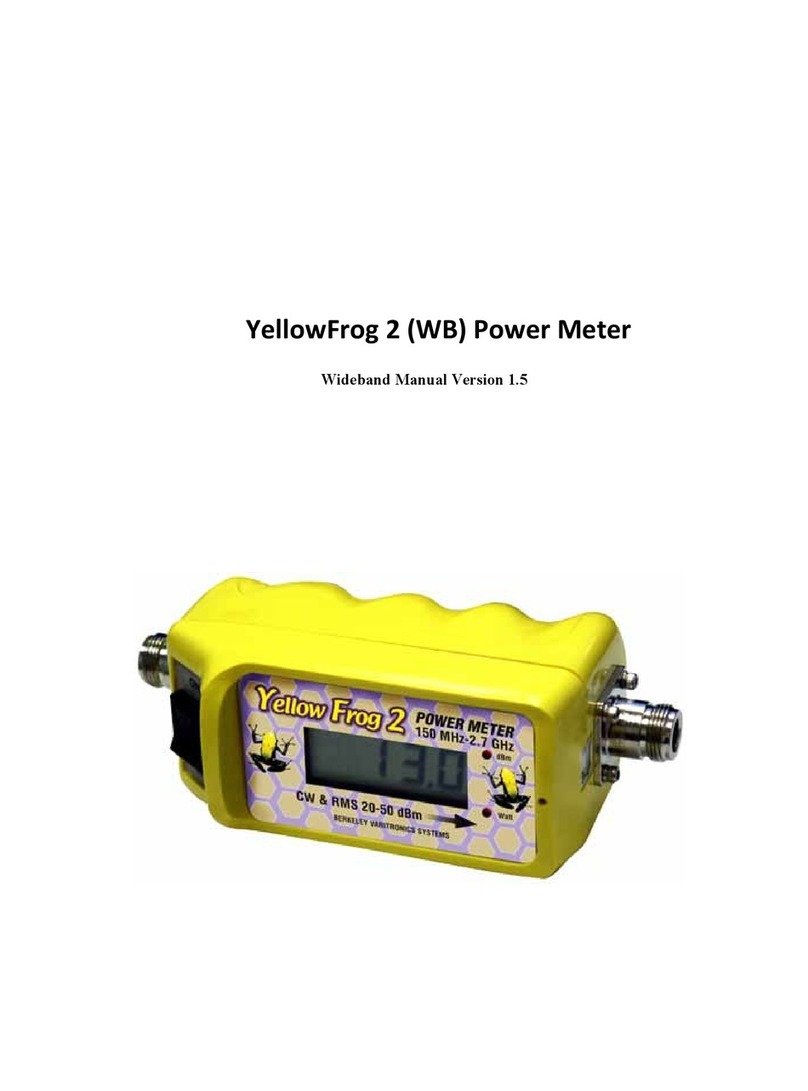
Berkeley Varitronics Systems
Berkeley Varitronics Systems YellowFrog 2 Wideband Manual
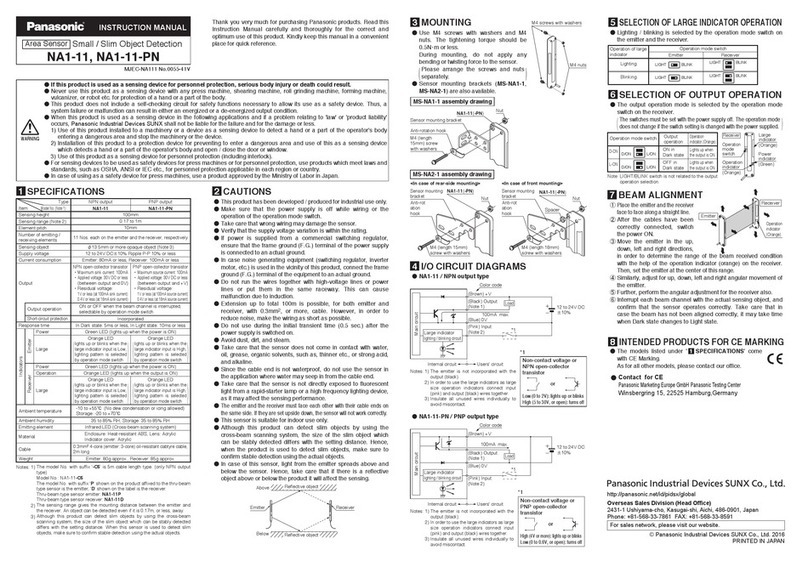
Panasonic
Panasonic NA1-11 instruction manual
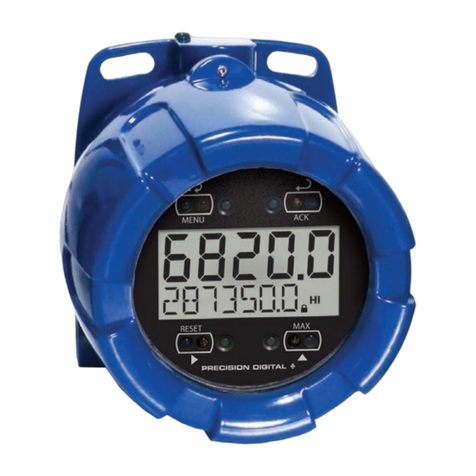
Precision Digital Corporation
Precision Digital Corporation PD6820 manual
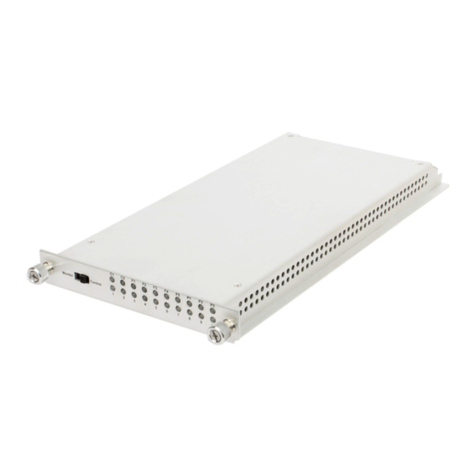
Exterity
Exterity AvediaStream c1110 Administrator's guide
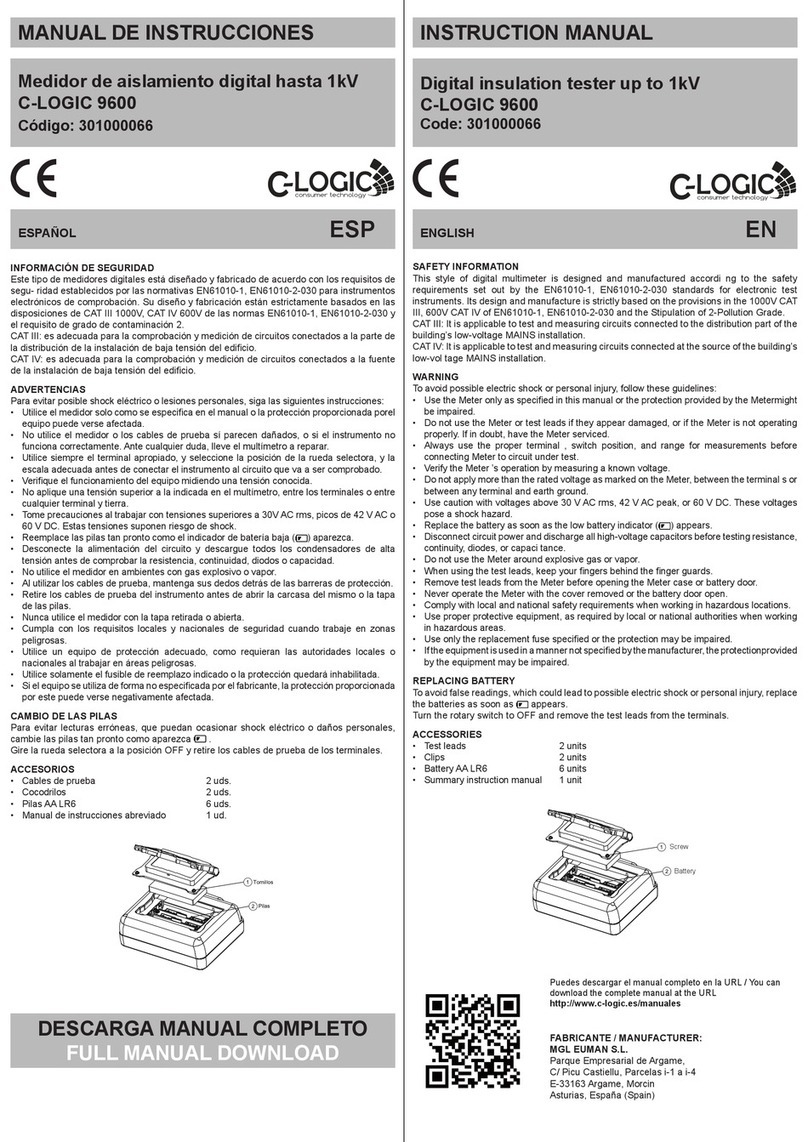
C-LOGIC
C-LOGIC 9600 instruction manual

Vutility
Vutility VoltDrop Quick install guide





